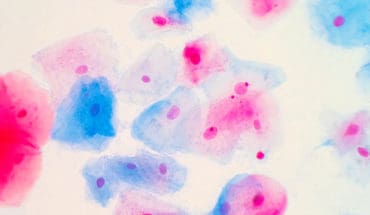• The National Institute for Health and Care Excellence (NICE) has recommended the combination therapy of dabrafenib (Finlee®) and trametinib (Spexotras®) for the treatment of paediatric patients with low-grade glioma (LGG) and high-grade glioma (HGG) who have a BRAF V600E mutation.
• BRAF V600E mutation is present in 15-20%2 of LGGs and in 5-10%3 of HGGs in children. The mutation is associated with poor survival outcomes and a less favourable response to chemotherapy2.
• The new treatment made available by NICE introduces a therapeutic option for children and young adults of 1 year of age and older with relapsed/refractory mutation-positive paediatric high-grade glioma – an aggressive tumour – where there was previously no recognised standard of care3. The recommendation makes available for use on the NHS the liquid form of the treatment, suitable for patients as young as one year of age.
• NICE recommendation is based on data from the TADPOLE clinical trial led by Great Ormond Street Hospital for Children (GOSH) in London. Researchers from around the world contributed to the trial, which is the first study to test if the combination treatment can be used to treat BRAF mutated brain gliomas in children.
Novartis announced that the National Institute for Health and Care Excellence has published its Final Draft Guidance (FDG) recommending the combination therapy of dabrafenib with trametinib, within its marketing authorisation, as an option for treating low-grade glioma (LGG) with a BRAF V600E mutation in children and young people aged 1 year and over who require systemic treatment. The combination was also recommended for the treatment of high-grade glioma (HGG) with a BRAF V600E mutation in children and young people aged 1 year and over after at least 1 radiation or chemotherapy treatment.
Gliomas are the most common type of brain cancer in paediatric patients and can be divided into two types: low-grade or high-grade glioma. LGG tumours are more common and generally have better outcomes compared to HGGs that have less than 10% long-term survival rate4. The presence of a specific mutation in the BRAF gene in gliomas is associated with even poorer survival outcomes, a less favourable response to chemotherapy and an increased risk of transformation of LGG tumours to the more aggressive HGG type.
Dr Michele Afif, Chief Executive at The Brain Tumour Charity, whose representatives gave evidence to the NICE appraisal committee on behalf of patients, said: “We are delighted that NICE has approved the first new treatment for paediatric brain tumours in decades. Though this will only affect a small population, it’s of huge significance to them and their loved ones and represents real progress. We hope that this will be the first of many new treatments that will ensure our community can live longer and better lives.”
The NICE decision is based on the analysis of data from the Phase II/III TADPOLE clinical trial. In low-grade gliomas (LGGs), the trial results showed a statistically significant improvement in the overall response rate, with patients randomised to receive dabrafenib + trametinib experiencing a response rate more than 4 times higher than those receiving chemotherapy (47% and 11% respectively). At a median follow-up of 18.9 months, median progression-free survival was 20.1 months with dabrafenib + tramatenib compared to 7.4 months with chemotherapy.
“Having been involved in the original study that identified the role of BRAF in cancer and the clinical trials that led to the NICE approval of targeted therapies for childhood brain tumours with BRAF gene mutations, it is exciting to see these treatments becoming available to patients in England and Wales. The new combination therapy is an important advancement in the field of paediatric neuro-oncology that offers an alternative to chemotherapy for low-grade gliomas and provides an additional treatment option for relapsed high-grade gliomas, where overall response rates to the current therapy options have been as low as 20% or less3,” explained Professor Darren Hargrave, clinical professor in paediatric neuro-oncology at GOSH (Great Ormond Street Hospital).
The Phase II results of the TADPOLE trial demonstrated positive outcomes for patients with more aggressive BRAF V600E mutation-positive HGG. The study reported 56% overall response rates to combination treatment with a mediation duration of response of 22 months and a median overall survival of 33 months. This is in comparison to conventional therapy, where response rates are below 12% and median survival only reaches 5.6 months. The TADPOLE trial also revealed the durability of the response to the combination treatment, as over half of the patient cohort remained on therapy at a median follow-up of 25 months.
The impact of adverse effects of dabrafenib with trametinib on the patient’s management and quality of life was very individualized within the study.The most common adverse reactions in patients with low-grade glioma (>=15%) were pyrexia (68%), rash (51%), headache (47%), vomiting (34%), musculoskeletal pain (34%), fatigue (33%), diarrhea (29%), dry skin (26%), nausea (25%), hemorrhage (25%), abdominal pain (25%), dermatitis acneiform (22%), dizziness (15%), upper respiratory tract infection (15%) and weight increased (15%). For high-grade glioma the most common all-cause adverse events were pyrexia (51), headache (34%), and dry skin (32%).
“We are humbled to be part of international scientific community effort in developing targeted therapies based on the unique genetic features of a patient’s tumour and welcome NICE decision to make the treatment available for patients in England and Wales. This recent appraisal is an example of how we can address the biggest clinical and public health challenges in the UK through collaboration and make the progress that’s needed for patients to benefit most,’ said Marie Andrée Gamache, Country President, Novartis UK and Ireland. ‘We are working with Scottish Medicines Consortium (SMC) to provide equitable access to the treatment across the UK.”
NICE is the first among European health technology assessment platforms to complete the review of clinical evidence from the TADPOLE trial and appraise the clinical and cost effectiveness of dabrafenib + trametinib for the treatment of paediatric patients with low-grade glioma (LGG) and high-grade glioma (HGG) with a BRAF V600E mutation. The recommendation makes the liquid form of the treatment available for use on the NHS, marking the first time a BRAF/MEK-inhibitor has been developed in a formulation suitable for patients as young as one year of age.
About Novartis
Novartis is an innovative medicines company. Every day, we work to reimagine medicine to improve and extend people’s lives so that patients, healthcare professionals and societies are empowered in the face of serious disease.
In the UK, we champion health and lives through pioneering NHS partnerships, innovative collaborations and a clear focus on the greatest healthcare challenges we all face. We are where science meets hope.
To reimagine medicine with us, visit our website at https://www.novartis.com/uk-en/ and connect on LinkedIn, Facebook, X/Twitter and Instagram.
- New lipid-based pathway discovered as key to memory formation - 25th June 2025
- Crucial link could explain how Alzheimer’s takes hold - 25th June 2025
- Understanding Your Mind Can Improve Daily Life - 25th June 2025







